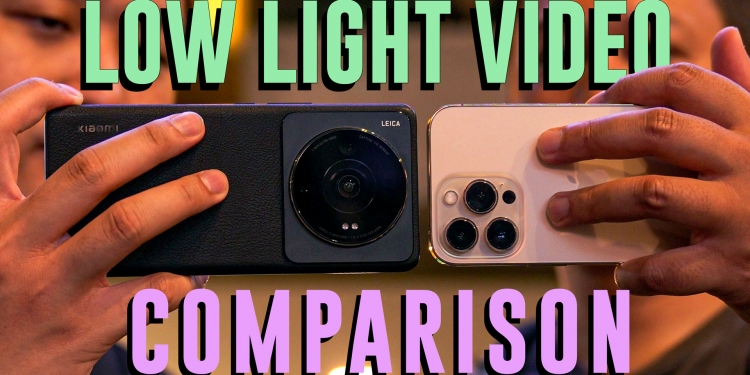Since we published the video on the Xiaomi 12S Ultra‘s low-light photography capabilities, a couple of you have asked how this translates to low-light videography. Well, we finally got the phone back from Xiaomi Malaysia for another night, and did ourselves a good ol’ fashioned video comparison. And this time we’ve even got a special guest.
The reason why the Xiaomi 12S Ultra is so interesting is because it is one of only a handful of smartphones that have a massive 1” camera sensor.
That’s the size of sensor you’d usually find in full fledged cameras like the Sony RX100, not a smartphone. In the last video we looked at how the phone performed when it came to photography and the results were mighty impressive.
But, when it comes to video, it’s a whole nother ball game. Obviously to see the results, you should watch the video embedded above, but if you want the quick and dirty findings, then here’s a quick summary.
Essentially, the Xiaomi 12S Ultra fared much worse when it came to low light video. Its main issues were an oversaturated colour profile, overaggressive noise reduction and smoothening. What probably surprised me the most is how unnatural the images looked compared to the iPhone 13 Pro, which is a far fetch from the results we got in the low light photography test.
One peculiar thing that the Xiaomi 12S Ultra does is that it doesn’t seem to have a cap on the shutter speed to prevent it dropping below 180 degrees. This meant that when the going got really dark, movement in the video became really choppy and almost dreamlike. It was very unnatural especially compared to the iPhone even though the latter had a slightly darker overall image.
Highlights also proved challenging for the Xiaomi 12S Ultra as it struggled to maintain detail in those bright spots, which is again a complete 180 from how well it controlled them when taking photos. The iPhone also had a far more natural colour tone, and this is most evident when it comes to retaining a person’s skin tone.
It seems telling that the Xiaomi 12S Ultra didn’t have a huge emphasis on low-light video when you don’t have the same ability to select between colour profiles the way you could with the Leica settings in photo mode. It seems a shame that the phone wasn’t able to make use of the larger sensor for video but perhaps the amount of data processing would have been too heavy for the device.








